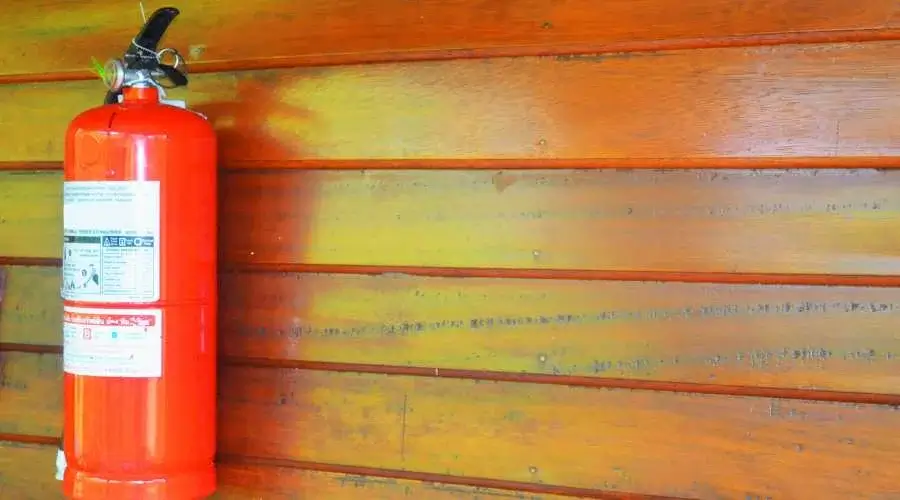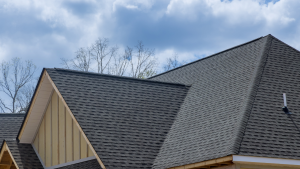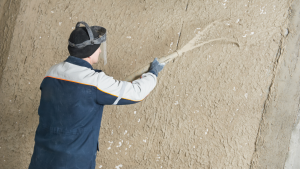In the United States, stucco is one of the most popular ways to cover the outside of a house. When done right, stucco can protect your home from damage caused by water, bugs, direct hits, high and low temperatures, and even fire.
But how well does cement protect your house and its people from the damage a fire does? How does plaster compare to other materials used to build home walls? And what is the fire rating of a properly fitted plaster system?
This article will answer all these questions, giving you a full picture of how stucco guards.
Fire Resistance of Stucco
Stucco is a building material that doesn’t catch fire very quickly. This is mostly because of the things that make it up. These are portland cement, sand, limestone, water, and other fillers. Since none of these things can start a fire, neither can stucco.
The way plaster is put on walls also helps keep fires from spreading. It is usually put in more than one layer, with three being the most common. These layers make the wall bigger and protect the top by making it more robust.
Cement can be used to cover other fire-resistant building materials, and it can also be used to protect itself from fire. Even though stucco is most often used to cover stick-built (wood frame) houses, it can also be used to cover stone or brick. Usually, this is done to make something look like plaster.
Comparison to Other Siding Materials
How well does concrete prevent fire compared to other popular wall materials?
Stucco is much better at keeping fires out than plastic, wood, or fake wood. Vinyl melts quickly and easily in a fire because of the high heat. Vinyl can start to melt in direct, strong sunlight on a hot day.
Wood and things made of wood, on the other hand, burn quickly and don’t protect against fire. Vinyl won’t stop your house from catching fire, but it won’t worsen the fire. But you can’t make the same claim about wood walls.
Stucco is most like stone and brick veneer and fiber cement floors from Hardie fiber cement siding . All of these options for walls are good at keeping fire out. The biggest problem with these goods is that they have cracks. The fire can reach the wood faster if damages are on the top.
Stone, brick, and metal are the building elements that can stand up to fire the best. Stone and brick are much more secure than their thin wall forms because they are total thickness.
Stucco Fire Rating
Most plaster jobs are about 1 inch wide. At least three layers of stucco will be added to the wall to reach this width. That is the scratch coat, the brown coat, and the finish coat. Even though these three layers are standard, you can add more, usually to protect against environmental hazards that are known to be in the area.
Plaster that is 1 inch thick has an average fire rating of 1 hour. This means a fire would have to go for an hour before it could get through the wall and hurt the rest of your house.
1 hour is very long compared to the standard fire protection time for new and old houses. A fire takes between 3 and 5 minutes, on average, to get through the walls of a modern home. On average, a house built 30 years ago can be used for 15 to 17 minutes.
The fact that plaster has a fire rating of 1 hour is important for two reasons. First, you and your family will have more If there is a fire, it is time to evacuate. And second, it means that your house can stay standing until the fire department comes to put out the fire.
Protect Your Home From Fire
Stucco is a fantastic technique to safeguard your home’s walls from fire. Stucco is made of materials that don’t catch fire and can withstand high heat and fires without catching.
Vinyl flooring is the most common and least expensive choice, but it does not cover as well as concrete. Limestone and brick, on the other hand, are the best options, but they cost the most. Stucco is in the middle, like stone and brick edges, giving security at a good price.
Stucco protects because it can stand up to fire for an hour. This means that it will take the fire average of an hour to penetrate the wall. This is a much better fire rating than what most new houses have.
But even though cement can’t catch fire, it’s important to remember that most house fires start inside. Stucco won’t keep those fires from getting into your house. But it can keep outside fires from getting inside.
Jersey Shore Stucco
Jersey Shore Stucco is a company in your area that works on stucco facades. We’ve been in the cement business since 1985 and have earned a reputation for doing good, honest work. You may get a free quote from us for your next stucco project.




